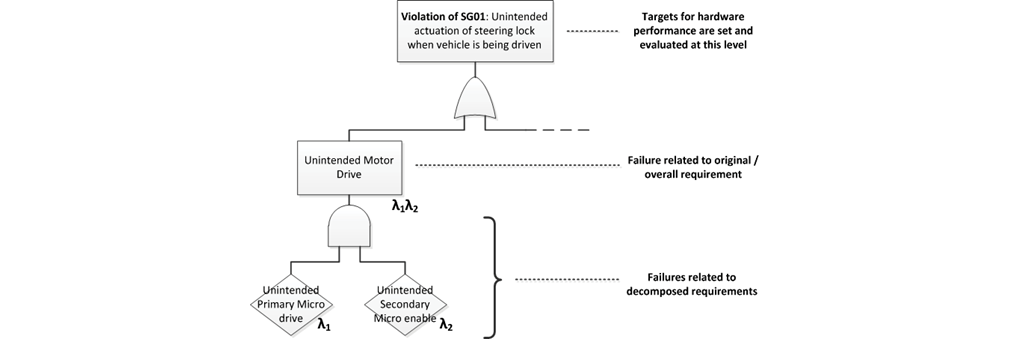|
31 |
PMHF論文das2016 (2) |
イントロダクション
PMHF論文das2016$\dagger$の続きです。
以下の段落はISO 26262の概要です。
The international standard ISO 26262 “Road vehicles - Functional safety” has been released in final form since late 2011 [1]. It provides a standardized set of processes and methods to assure the functional safety of electrical and electronic systems in the automotive domain. The standard is an evolution of the IEC 61508 functional safety standard, applied specifically to the automotive realm [2].
国際規格ISO 26262「道路運送車両-機能安全」は、2011年後半から最終版としてリリースされている[1]。この規格は、自動車分野における電気・電子システムの機能安全を保証するためのプロセスと手法を標準化したものである。この規格は、IEC 61508の機能安全規格を発展させたもので、特に自動車分野に適用されている[2]。
以下の段落はISO 26262の説明です。
ISO 26262 requires a variety of processes and frameworks for safety management, safety concept development, requirements flow-down, and verification & validation activities. The standard also requires quantified metrics to be calculated for safety-related systems.
ISO 26262 は、安全管理、安全コンセプト開発、要求事項のフローダウン、検証・検証活動のためのさまざまなプロセスやフレームワークを要求している。また、安全関連システムの定量化されたメトリクスの計算も要求している。
以下の段落はPMHFの説明です。
Of particular interest is the Probabilistic Metric for Hardware Failure (or PMHF), which represents a calculated estimate of the rate of hazard occurrence due to random hardware failures. This value must be calculated for systems rated at a high Automotive Safety Integrity Level (or ASIL2). Specifically, systems rated at ASIL C or ASIL D must achieve targets such as those proposed by the standard and listed in Table 1.
特に関心が高いのは、ハードウェア故障の確率的指標(PMHF)であり、これは、ランダムなハードウェア故障によるハザード発生率の計算された推定値を表している。 この値は、高いAutomotive Safety Integrity Level(またはASIL2)で評価されたシステムのために計算されなければならない。具体的には、ASIL C または ASIL D に格付けされたシステムは、規格で提案され、表 1 に記載されているような目標を達成しなければならない。
$\dagger$N. Das and W. Taylor, "Quantified fault tree techniques for calculating hardware fault metrics according to ISO 26262," 2016 IEEE Symposium on Product Compliance Engineering (ISPCE), Anaheim, CA, 2016, pp. 1-8, doi: 10.1109/ISPCE.2016.7492848.





